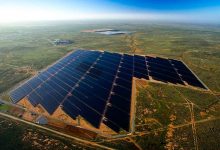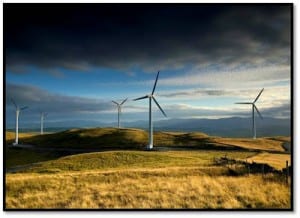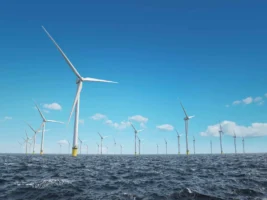One of the really interesting observations from the Australia Energy Market Operator’s recent 10-year outlook was the prediction that within two years10, every state grid in the country will experience minimum demand in the middle of the day, rather than at night.
The AEMO prediction, made in its annual Electricity Statement of Opportunities, a 10-year forecast of demand and supply, notes that South Australia ahas been day-time minimums this since 2012, Tasmania experienced it last summer, and Queensland, Victoria and NSW could do the same as early as next year.
It is all due to the growing uptake of rooftop solar PV, the report says, and in some states will be accelerated by the huge developments in utility-scale solar that are now taking place.
“Minimum demand is forecast to decline rapidly over the next five years, due to projected high rooftop PV uptake,” the report says. “All regions are expected to experience minimum demand in the middle of the day within the next year or two … this is about two years earlier than previously projected.”
This is going to have an impact for several key reasons. One, as we are already seeing, it means that the price of electricity on the wholesale market will fall to its lowest levels under the mid-day sun, rather than at night.
That could lead to the second impact – the rising incentive for storage, both at the household level and at utility scale.
And it also leads to a third concern, top of mind for AEMO, that of energy security. It is concerned about scenarios that suggest by 2021/22, there will be precious little generation that it can control, because most of the demand will be met by behind-the-meter solar PV.
But first to prices.
RenewEconomy wrote a few months ago about the incidents of negative pricing in the middle of the day in the Queensland electricity market, a dramatic development in a grid where coal generators once relied on peak pricing in the heat of the day.
Analysts at Morgan Stanley have been looking at this situation and noted that in both Queensland and NSW in the March quarter (traditionally the hottest months), there were price spreads of nearly $50/MWh between noon and the evening peak.
It notes that this is creating revenue opportunities for storage plants – which may explain why so many projects in both states are looking for significant storage investments, both battery and pumped hydro.
Morgan Stanley says it expects another 1.5GW of new large-scale solar will be connected to the National Electricity Market (the main grid in the eastern and southern states) in 2018, and another 2.8GW of big solar could follow. This will add to the more than 1GW of rooftop solar that is also being added this year.
“Near term, we think the new solar generation should dampen average prices by displacing more expensive gas power generation,” Morgan Stanley notes.
But it says that over the longer term, if this new entrant solar generation forces a coal generator to exit the market (because it is no longer making as much money as it used to), then prices should rise.
This, ITK analyst and RenewEconomy contributor David Leitch notes, is the way the market should work. A price fall encourage old and inefficient plant to exit the market. A price rise encourages new entrants. (But apparently we don’t like market forces too much any more).
This leads us to the AEMO concerns, principally about now having enough control over the market, because so much of demand is met by equipment that – at the moment – it cannot control.
This has been behind its push, along with the networks lobby, to be able to “orchestrate” behind the meter solar PV and battery storage, so it has better control over the way the grid is managed at times of such low grid demand.
AEMO says in its ESOO that the fall in minimum operational demand will result in more periods where there is little generation supplied by centrally managed generators to control the system.
That, in turn, could reduce maintenance windows because it may need to direct synchronous generation online to manage system strength..
“The highest short-term risk is in South Australia, where the minimum demand is forecast to fall to 70 MW by 2021-22 and become negative by 2023-24” at times of peak demand, AEMO says, noting that this is one year earlier than forecast in March.
To deal with this, AEMO has pointed to its recent Integrated System Plan, which recommends the construction of the RiverLink interconnector and increased coordination of DER (distributed energy resources) in South Australia, which it says would help mitigate this risk.
- But NSW is also seeing big changes. By 2023, AEMO notes, minimum demand could fall to 3.8GW, which is a big swing from its forecast maximum demand of around 12.6GW.
- By 2038, minimum demand in NSW will remain around 3.4GW, but maximum demand, due to population growth, economic growth, and rising temperatures, could grow to nearly 17GW. By that time, most of its coal fired power stations will have retired.
That will require some management – but maybe not as much as in the South Australia grid, which AEMO predicts will have “negative demand” of as much as 805MW by 2038.
Clearly, by then, a lot of excess solar power is either going to be spilled or curtailed, or stored via batteries, pumped hydro and solar thermal for another part of the day, or week.










